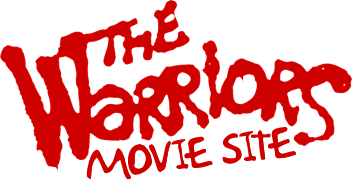Filming for The Warriors began on June 26th 1978 in New York City for what would become one of the most iconic cult movies of all time. The making of The Warriors is extensively detailed below from over ten years of collecting facts and information related to the shooting of the movie.
It all started when Producer Lawrence Gordon discovered a coverless novel called “The Warriors” by Sol Yurick in the spinning discount rack of a book store. Gordon was so taken by the plot that he called the publisher and bought the subsidiary movie rights out of his own pocket. Gordon approached Director Walter Hill to see if he would be interested in making the movie to which Hill responded that he was as it sounded to Hill like it had a good chase atmosphere and a nice simplicity about it.
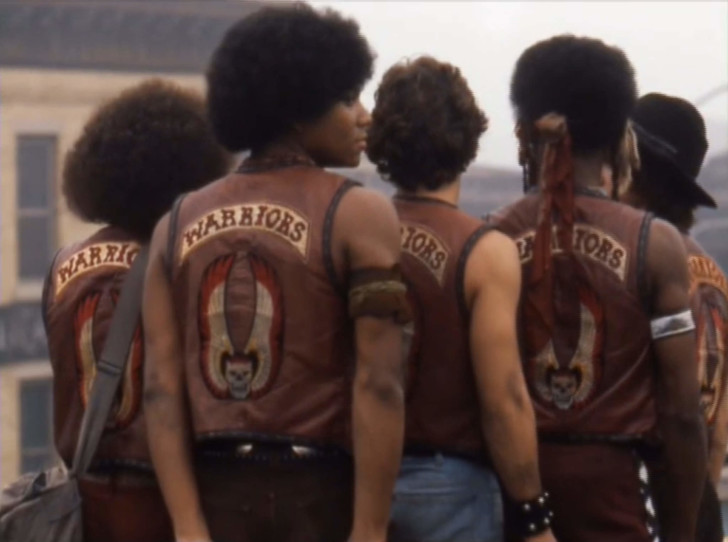
Gordon hired David Shaber to write the script and approached Walter Hill to direct after working with him on Hard Times and The Driver. Hill was very interested in the project but felt that no studio would let them make the movie as it did not lend itself to named actors so the pair decided to make a western called Last Gun instead. However, financing fell through on the movie when they were about 8 weeks away from shooting and the movie was never made. Gordon had a window open with Paramount to make a movie and so their attention returned to The Warriors but it meant that they had to start shooting immediately.
In an interview with “Film Bulletin”, Lawrence Gordon explained how the film came about. “The Warriors was a tough haul for us, all the way through. I had read Sol Yurick’s novel, the basis for our film, several years ago, but I never thought any studio would be interested in doing it, since it involved no major star roles. Then Paramount came onto the scene. We agreed on a development deal, and David Shaber went to work on the screenplay. A lot of the credit for making the film possible must go to Barry Diller (Paramount’s Chairman) and Michael Eisner (President) for taking a chance with us on it”. Gordon elaborated further by saying “We are taking an R-rating on this film not because of the violence so much as the language, which to remain true to the story and characters is necessarily rough and authentic. It’s street talk, plain and simple. The way Walter Hill has directed the film, it has a kind of pop-gun violence. There are many action situations and fights, but we don’t show and don’t need to show a lot of blood. This movie is basically an adventure film. I like to describe it was the difference between war movies and a picture like The Guns of Navarone which was an adventure film set against the background of a war”.
Whilst the movie was based on Yurick’s novel, it is in fact a lot closer to Xenophon’s The Anabasis which is in fact what Yurick based his novel on and follows an army of Greek soldiers after the battle between Athens and Sparta that left them stranded from home.
In the interview with “Film Bulletin”, Walter Hill said that “Larry really only gave me Shaber’s script as a possibility to direct. The screenplay was solid, but I began to get interested in other ideas in the story, particularly in its allegorical aspects. I eventually wound up re-writing a lot of it. The novel is a bit more realistic than the film in its portrait of the gang subculture. We essentially converted that realism and used the gang mainly as a convention to tell a different kind of story. You’ll find that the film sets up and works within its own fantasy world.”
Andrew Laszlo, Director of Photography, recalled being called by Frank Marshall in the spring of 1978 persuading him to meet with him and Walter Hill in a New York Central Park South hotel to discuss a new potential project. A copy of the script was sent by express messenger to Laszlo so he could read up on it before the interview the following day. Laszlo was not 100% sure he liked the script as it was peppered with four-letter expletives. However, following the interview in the top floor suite of the hotel overlooking Central Park, Frank Marshall called the next day to offer the picture to him.
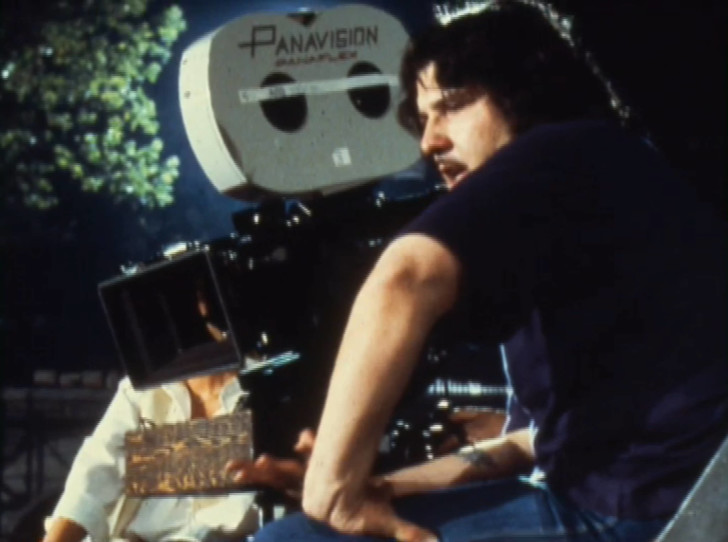
Night-time filming seems to hold a fascination for Walter Hill. “Well, I am very strongly attracted to it. You know, things look altogether different and take on different connotations at night. It’s all in the light, or the lack of it, and the artificial lighting you can use. It’s quite a tough challenge to control, and our cinematographer, Andrew Laszlo, came through brilliantly. The night opens up all sorts of dramatic possibilities that you simply don’t have during the day.” Hill continued by saying that “it was a horrendously tough movie to shoot. We did it almost completely on location, in the streets and subway stations of Manhattan and Brooklyn. And those are nearly impossible situations to control. We also had weather problems – rain when we didn’t want it and none when we did. And, of course, we shot only at night, which is very hard on the cast and crew”.
Walter Hill first visited New York when he was being interviewed for the publicity surrounding the first film he directed “Hard Times” and he only really saw a limited part of the city from his brief stay centred around his hotel suite. When he came to film The Warriors in locations across the city he began to see things that even the natives didn’t see. Hill was based in the Sherry Netherland Hotel near Central Park where he worked on the script and scouted for locations.
Hill wanted to use real locations for the movie and not use sound stages which meant that Frank Marshall had to build a good relationship and have extensive meetings with the gang department of the NYPD to find out where they could and could not shoot.
Frank Marshall, also speaking to “Film Bulletin” said “Paramount wanted to shoot the film in New York, which ultimately was a wise decision although it posed severe problems. The Transit Authority had a few reservations about screenplay, however they eventually gave us invaluable corporation, allowing us to use real subway stations, including the one at 96th Street and the huge Union Square complex. They also allowed us to film during entire nights, uninterrupted, on moving trains, which hadn’t been done before. We used real locations, although we did build one set at the Astoria Studios on Long Island, the men’s room where a large-scale battle takes place. We built it reluctantly simply because we couldn’t find a real men’s room large enough to shoot in comfortably”.
Lawrence Gordon’s production of The Warriors, was not an attempt to depict any real-life gang or actual incident. The aim of the film was to capture the flavour of what it has always meant to be a member of a gang – the tribal feeling of going into battle together, of loyalty, of support and shared goals. Lawrence Gordon and Walter Hill set out to create a gang which would have the audience’s sympathy as they fight off all the other gangs in the city. They cast newcomers in the film to maintain the look and feel of real people caught in dangerous situations.
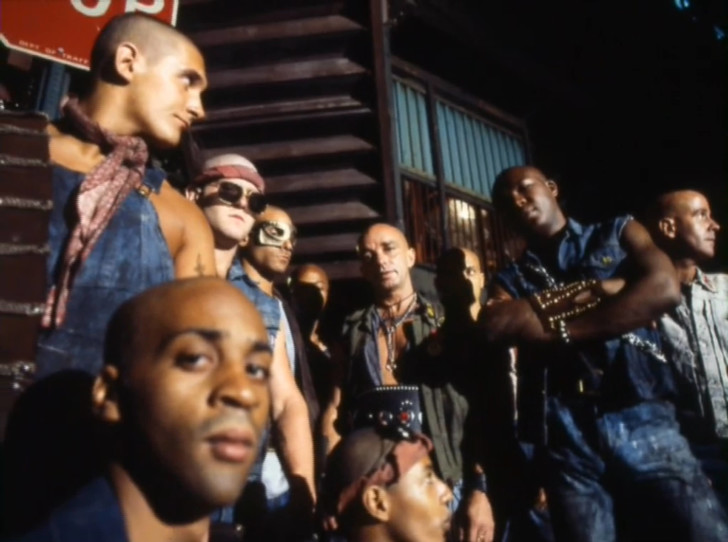
Hill also considered Orson Welles as a narrator for the movie and later compromised in his Director’s cut of the movie by inserting comic strip scenes which provide an element of narration. Hill had always felt that the movie never made sense without them as they conveyed the sense and feeling of jeopardy.
The budget for the film was apparently set at $4.7m according to Andrew Laszlo, which was the amount they needed to get the budget to adhere to in order for the film to be given the green light from Paramount though the film did end up going over-budget. In order to reduce the cost of shooting, Laszlo suggested that they wet down all the streets they intended to shoot on to save time and money later on. I.e. for continuity purposes, they would not be able to shoot in the rain or have to wait until such a time that the streets were dry enough to film again. For these reasons, the shot of the intense storm was added early on in the movie.
There were around 5 other films shooting in New York at the time, and that coupled with the low budget made it very difficult for Hill and Gordon to find enough crew to make the picture. Early on they had to dismiss their first Assistant Director and bring in David O. Sosna from Los Angeles which wasn’t seen as ideal as there was a belief that LA Directors didn’t know about how to shoot in the complex setting of the streets of New York.
Frank Marshall recalled some of the first challenges. “Our first problem was the casting, the problem being that as soon as we put out the call, we were wall-to-wall with highly capable young actors. There’s a tremendous talent pool in New York. We chose a solid cast that responded under Walter’s guidance with good ensemble playing. In fact, by the film’s end, the actors playing the Warriors had really become a gang of sorts”. In fact, Marshall recalls that they only cast actors from New York to make The Warriors true to New York and the kids that were there at the time. By the time filming began they all felt like partners in an adventure together.
Walter Hill wanted The Warriors to be an all-black and hispanic gang but the producers disagreed. Hill realised that this forced him to give the movie a comic-book quality as this was the only way it made the movie to make sense to him. In one of the strangest casting rumours, Robert De Nero was supposedly offered the role of Cowboy, but he turned down the role and Tom McKitterick was cast instead who said he felt like he “was a cowboy fighting off the bad guys”. In contrast, David Harris was cast as an Indian to show the melange of the gang itself. Harris enjoyed the “fierceness” that his Indian get-up lent to his character. The part of Cochise was the last part to be cast and Harris was cast after about 5 minutes. Right after the audition he called his agent Jackie thrilled at being cast, not that he was 100% sure that he had definitely been cast as Hill had only said “see you soon” at the end of the audition. All the characters drew from the special atmosphere that came from the set to their advantage in their performances.
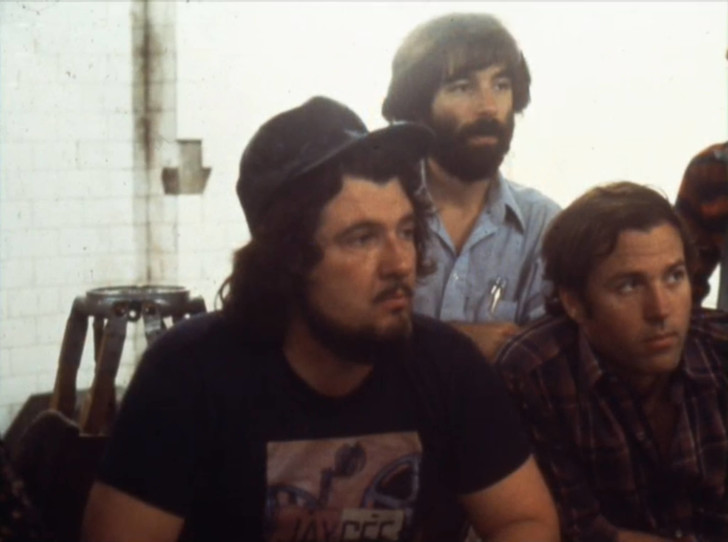
Thomas G Waites, who played Fox, was going to be the character who had the love interest with Mercy. However, Walter Hill felt that Michael Beck’s character (Swan) had better on-screen chemistry and the script was changed. According to the original movie script, there was going to be a homosexual and sadomasochistic gang called The Dingos with doberman pinschers that would abduct Swan. In the script, Swan was to escape this gang and lead his fellow Warriors home.
This caused a disagreement between Waites and Hill and Waites was removed from the movie after 8 weeks. A stunt double is used in the scene where the character of Fox is killed off by a cop who throws him on the subway tracks.
Terry Michos, who played Vermin, made his character more comical to make it more memorable and to get more on-screen appearances in the movie. This worked as the character of Vermin was originally scripted to be killed off by The Lizzies. Michos noted “In the original script, the guy I portray, Vermin, gets killed, but Walter Hill liked what I was doing with the part and changed things around so that I get to stay until the end of the picture. I owe my life to Walter Hill!”. Michos mimicked his character on an old cartoon called Hercules where the sidekick was half-man and half-horse who repeated everything. Michael Beck often called Terry “Herc” on set as a result.
Cochise, played by David Harris, was also scripted to be killed off, but this time by The Baseball Furies. This was later removed from the script and Cochise survived until the end.
James Remar was cast as Ajax after he impressed Walter Hill, Lawrence Gordon and Frank Marshall by getting into character and using his “rage” to lift the corner of the conference table around which they were sat during his audition, emulating the scene where he would be handcuffed to the park bench trying to make him appear as big and as strong as possible.
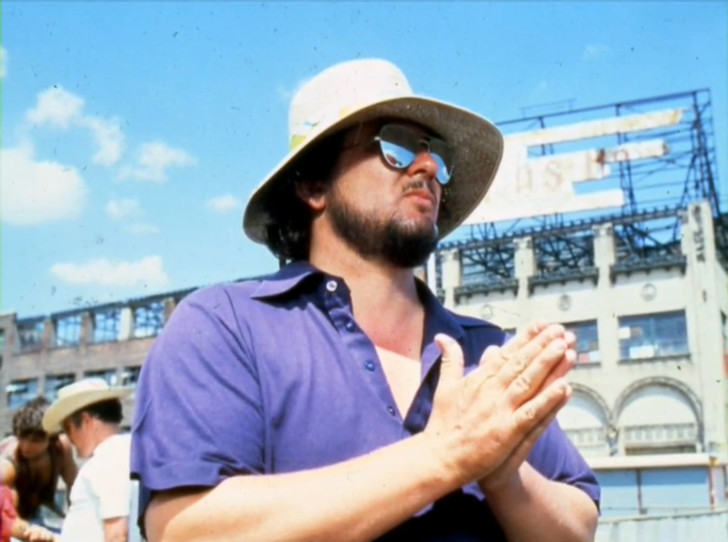
Remar also spent time in Coney Island to observe people and to get into character. On the Special Edition DVD he recalls speaking to a tough-looking guy operating a ball toss stand as he was the only person around. After tossing a few balls he asked the guy what kind of people live and hang around in Coney Island to which the guy said “the worst kind”. Irwin Keyes was also considered for this role but was deemed too old. Keyes appears in the movie as the cop who clubs Ajax in the stomach.
Walter Hill never treated the actors like beginners and spent a great deal of time with them. Brian Tyler, who played Snow, recounted that “this was really my first professional acting job but Walter never made me feel like it was. He gave me a lot of confidence and even gave me dialogue that wasn’t in the script”.
Walter Hill originally wanted a tough Puerto Rican girl to play Mercy. However, Deborah Van Valkenburgh got the part but she had to audition many times for the part competing against Italian talent. She had been appearing on Broadway in the revival of Hair which led to her getting an agent that found out about the casting call for The Warriors. Van Valkenburgh believes that they had to push Walter Hill and Lawrence Gordon quite hard to get the audition. Hill eventually picked Deborah as she wasn’t the obvious choice and because he wanted someone unknown.
Deborah’s real boyfriend starred in the other gang movie of the time, The Wanderers, and discouraged her from auditioning as he believed that they were looking for someone better “endowed”. She was eventually chosen with Hill calling her the “unobvious choice”. Van Valkenburgh didn’t appear before the cameras until almost a month into filming but she spent a week of nights on set before she was called to get herself attuned to night shooting. “There’s a tribal feeling about this film, and I really felt close to all the guys. Even if I wasn’t needed, I wanted to be on set because I belonged with my fellow actors” she remarked.
Sigourney Weaver was considered by Walter Hill for a role though was later cast for Alien (of which Hill was one of the Producers) and during his research of Weaver’s performance he saw Michael Beck in the independent film Madman that had been shot in Israel. Impressed by Beck’s performance which Hill said had an “interesting quality”, he cast Beck as Swan following an audition. Tony Danza had previously been offered the role but he chose to appear in TV series Taxi instead.
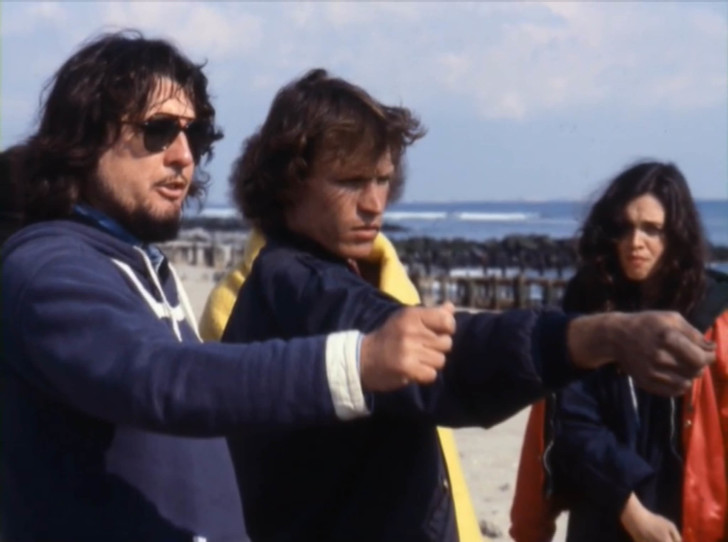
Frank Marshall remembers the start of the shoot. “We started on June 26th. We tried not to publicise the shooting too much, attempting to keep a low profile, for reasons of street control. But we did unavoidably run into some real gang problems. Larry, Walter and I agreed at the outset not to use real gang members as extras. But when the word got around about us, they came around. And we had a couple of tight spots with them. We learned very quickly that you don’t fool around too much with those guys.”
The first scene of the movie was set in Coney Island on the afternoon before The Warriors head up to the conclave. The scene depicts Cleon, played by Dorsey Wright, talking to his fellow Warriors, explaining why he chose them and what their roles will be during their expedition. Cleon is also seen talking to his girlfriend, Lincoln, played by Pamela Poitier who explains that she has a bad feeling about her boyfriend heading up to The Bronx. The producers cut this scene stating that the only daytime scene should be at the end of the film after a night of horror.
The final version of the movie instead features shots of The Warriors talking about the big meeting. These head shots were filmed in Coney Island one night when there was a torrential downpour. Since they were unable to film, Walter Hill suggested they film some tight close-up shots with dialogue invented by Hill. The shots were filmed with a single light overhead in a large area under the platform, but above street level. Laszlo commented that the room they were shooting in was really poor quality so he masked it as best he could during the shooting. These shots were cut with some ‘horseplay’ film that had been shot earlier.
Unlike many films, the expensive ‘showpiece’ and most memorable scene from The Warriors is right at the start of the picture where audiences see Cyrus addressing all of the main gangs of New York. The park at the beginning of the movie was supposed to be in the North Bronx but was actually Riverside Park on Manhattan’s Upper West Side.
1,000 extras were used at the meeting with many coming from Riverside Park itself and included many real-life gangs who turned up in their own original costumes, or “colours” which added to the authenticity of the movie. It was difficult to get all the extras to follow direction. This forced Assistant Director David O. Sosna to put up a “God” microphone with speakers and amplifiers so that everyone could hear the direction.

To film the chaos that ensues after Cyrus was shot, the extras were asked to form lines of concentric rings that ran in opposite directions to each other which gives the shot a lot of movement whilst preventing everyone from running into each other. This also made direction easy for the extras who didn’t know about filmmaking as they just had to “follow the guy in front”.
The Screen Actors Guild permitted a certain percentage of non-Guild members being featured as extras in the movie but many nonprofessional actors and extras did not realise the amount of effort that it takes to film all night. Andrew Laszlo commented that many went to sleep on the grass or went home when they got tired or bored. As a result, the crew had to change the filming schedule to shoot the scenes with the larger crowds earlier in the evening.
Many extras were also going home wearing their costumes because they were often better than their own clothes or because they wanted to use the outfits in their own gangs. This was costing Paramount’s costume department a lot of money so they created a novel solution. Every extra received a raffle ticket in return for their costume at the end of the shoot in which one lucky person would win a colour TV. This worked well for the first few nights until one night the winner was mugged within view of the crew on location after attempting to carry their TV home.
Roger Hill, who played Cyrus, was not the person who had been cast for the role. Roger stepped in to play Cyrus after the original actor, a real-life leader of a gang, failed to turn up to the shoot. To this day the crew never found out what happened to him. It was also very difficult to find someone to do the stunt where Cyrus falls backwards off of the stage after being shot so Craig Baxley, the Stunt Coordinator, had to pretend to be Cyrus for that particular stunt.
Andy Kessler, a New York skateboarding legend, was at the filming of the conclave. He remembers there being several real life graffiti crews on site including Soul Artists, Vandals, War and the Independents. When The Warriors opened, graffiti artists went to see if their tags had made it into the film. An “IZ THE WIZ” tag made it into the film in a subway shot, as did one by “Gasp” and there is a big “Vandals” tag on the subway wall as The Warriors run to evade the cops at 96th Street Station.
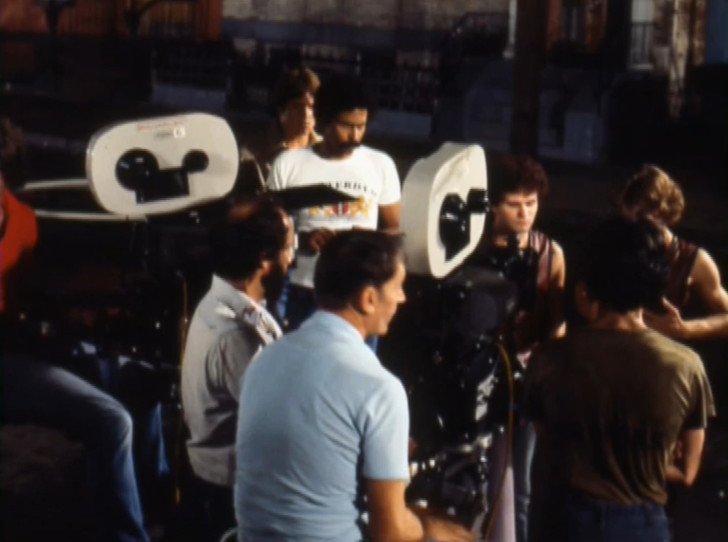
Filming The Warriors was quite a challenge as the crew were often filming on the turf of real gangs. For example, The Homicides were one of the real gangs of Coney Island and didn’t approve of fictional gangs wearing colours on their turf and so the wardrobe department made sure nobody walked off-location wearing The Warriors vests. This included the scene at Stillwell Avenue station where the actors had to take their colours off between the platform and the restaurant on the street they were eating at.
The logo used on the back of The Warriors’ vest was taken from a picture of a bike built in a Californian prison by an incarcerated Hell’s Angel which appeared in a magazine. You can apparently also see this logo on The Revenge of The Mummy Ride at Universal Studios, Orlando.
The gang were safe in the cemetery scene in Brooklyn due to a fence that surrounded them. However, crew members were reportedly sent death threats because local gangs had not been cast and thousands of dollars worth of equipment were damaged when one gang tore through the set during a lunch break. Larry Gordon, Walter Hill and Frank Marshall had to have a constant police escort in Harlem as a result and armed guards were always close by.
Larry Gordon remembers “we had some really exciting scenes in The Warriors, but we had to keep their existence quiet so that the gangs wouldn’t come around. And we had over 1,000 extras dressed in some really wild costumes for the conclave scene, but the only cameras there were ours. We had some run-ins with gangs during the summer, but the fact that nothing really serious happened was, I think due to the fact that we laid low”.
Filming in Coney Island was surprisingly one of the hardest places to film. Lawrence Gordon recalled one time when they were trying to film on the Boardwalk, one of their crew members were having a hard time stopping a local guy from walking in to the shot causing him to start shouting which interrupted the shooting. They also found continuity difficult as waves were crashing in to the shot in different places and the cameras were breaking down when they were out filming.
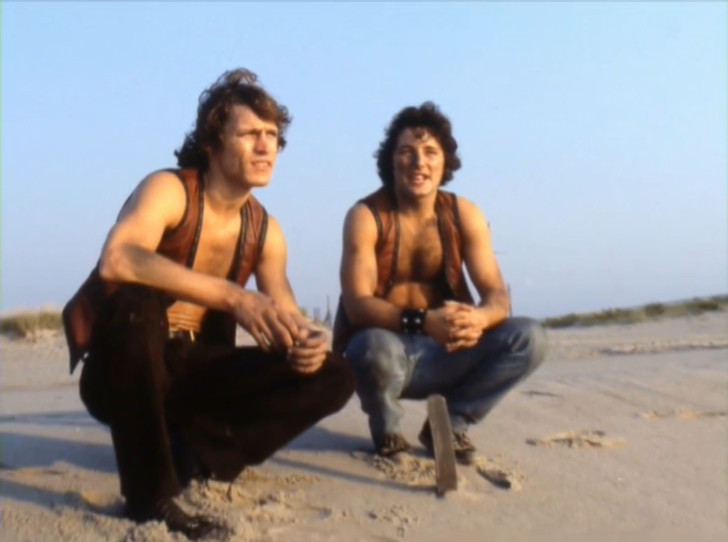
The crew also had to pay for a gang in Coney Island to appear in the movie after the crew spray-painted The Warriors’ tag over the gang’s tag on the side of the bath house. Conversely, the Turnbull AC’s, a fictional gang, inadvertently scared people after they visited a hamburger joint during filming with customers believing they were a real gang.
The film trucks used by the crew were also “protected” by a real gang called The Mongrels for $500 a day after the crew were eating in an Italian restaurant and a member of the gang said “we’d love to protect them for you” and a gang mediator from the police department informed them that they should “pay ‘em”.
Michael Beck also recalled another scene where real gangs in apartment blocks started shouting and screaming interrupting the filming because they hadn’t gotten their payout forcing the crew to move the filming elsewhere.
In other locations some crowd members were forcibly removed from set. The filming was always low-key but always drew large crowds of spectators, even at 3am in the freezing cold at 50 degrees. On one occasion, the crew were urinated upon from a tower block due to the noise they were creating in the night. Also, filming during the scene with The Orphans was interrupted by a police car with sirens-blazing that was closing in on a robbery car.
Another big problem for the crew during the conclave scene was the presence of a large Titan camera crane and a slightly smaller Atlas crane in the middle of the shooting area. The last shot needed was a wide angle shot of the whole scene and it was not possible to remove the cranes from the park as it would have taken too long and would not have been possible until daybreak which would have meant another costly night of filming recalling 1,000 extras for one shot.
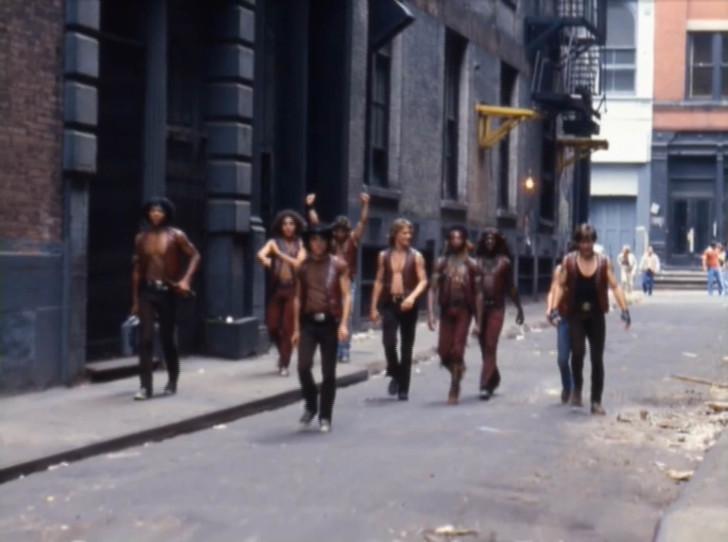
In the end, Laszlo decided to film the shot with the cameras in the frame. The crane shapes were broken up and camouflaged with branches and other nondescript items and the action in the shot was designed to draw the viewer’s attention away from the cranes such as the police car with flashing lights on the left of the shot. The camera platforms were also raised and a large tree branch added in front of the camera to block the sunlight which was starting to appear on the horizon. Laszlo also darkened the top of the filter to make it still appear like it was the middle of the night. Laszlo mused that this particular shot was like “pulling a rabbit out of the hat”.
Aside from gangs, the crew faced other problems during filming. For example, the lighting rigs used by the crew caused light-sensitive street lights to switch off in the scenes below the subway forcing the crew to tape over the light sensors on the street lights to ensure they stayed on.
Another problem faced by Andrew Laszlo was the fact that as the city was the set, it was not possible to light up all the areas in the background making the film rather dark and underexposed. Laszlo chose to film the scenes in this way and receive a poorer result rather than risk losing the feel for the environment in which they were filming. It was also not possible to change the dim, low-powered lights on the subway as the light fittings used proprietary fittings and bulbs. The subway was wired that way to save money (by using less energy) and to encourage less theft (since the bulbs were dim and required left-handed sockets making them less useful to anyone who stole them). However, Laszlo did borrow some spare bulbs which he used to create a lighting rig that was used to make the internal shots of the subway train brighter.
Laszlo’s idea to wet the streets down for continuity also served a double purpose since the reflections of the lights in the puddles reduced the need for additional lights on location.
During other scenes, such as the chase through the park with The Baseball Furies, there was not enough light and additional fake street lights had to be installed. Laszlo’s team hooked these up in the branches of the trees above the path that The Warriors and Baseball Furies run down. Additionally, fake street lights were added to the scene in the cemetery where there were no light sources. Laszlo often wondered why nobody had commented on the fact the lights in the park or the cemetery were there but reasoned that “audiences see what they want to see”. Some additional lights were also added to other shots masked behind fake signs that read things like Hotel, Bar, Garage, Park, Eats, Diner, Restaurant etc, with the rigs covered with blackwrap to conceal them. These lights were used to make dull shots more exciting and colour gels were added to the filters with some made to flicker like old style neon lights.
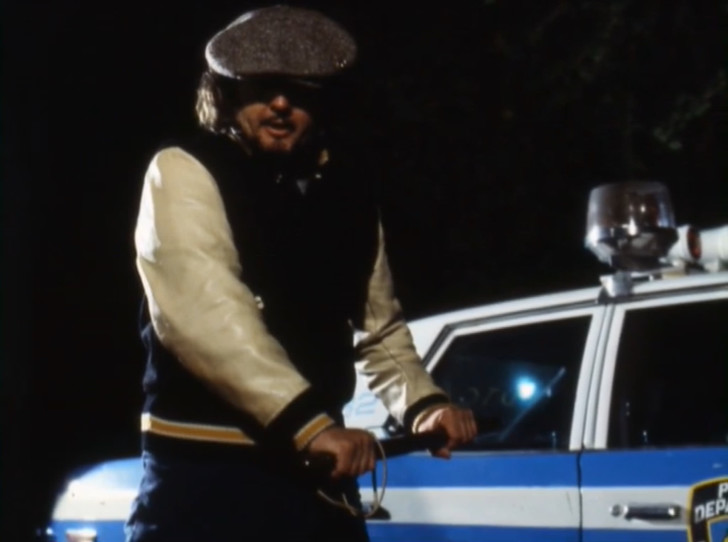
One shot caused Andrew Laszlo many anxious sleepless nights and that is the shot at the very start of the movie where a train slowly enters the station. The camera had been set up on a bridge shooting the train off in the distance. Laszlo therefore had no control over the light levels on, or near, the train. In the daily rushes, one commentator said that the shot was “unusual and interesting”.
Filming The Warriors took place at different locations across New York. The IND Hoyt-Schermerhorn subway station in Brooklyn was used for the 96th St. Station scenes as it has a “dead” track which can be used for filming. Some external shots were taken at 72nd Street.
Subway equipment throughout the entire movie consisted of IND/BMT R-27 and R-30 units, even though the IRT is implied in many instances. Apparently, no attention was paid to train markings, which varied considerably and were often unrelated to the actual routes traveled on. Other subway cars seen briefly are R-12, R-42 and R-46 units.
The subway footage during the opening titles was filmed along the express tracks of the IND Fulton St. line in Brooklyn. The support of the police and the Transit Authority was essential to the film. One cast member even remarked that “I’ve lived in New York all of my life, and I’ve never been on a subway as much as I was for this movie”. It also seemed a treat for real passengers on the scheduled trains to look out of their windows and realise that they were part of a movie being made.
Frank Marshall had to ask the Transit Authority what would cause a train to stop as in the film they had to keep finding reasons to stop The Warriors using the subway forcing them to disembark and encounter other gangs. The Transit Authority said a fire would stop the train so the crew created the scene with the fire to make The Warriors encounter The Orphans.
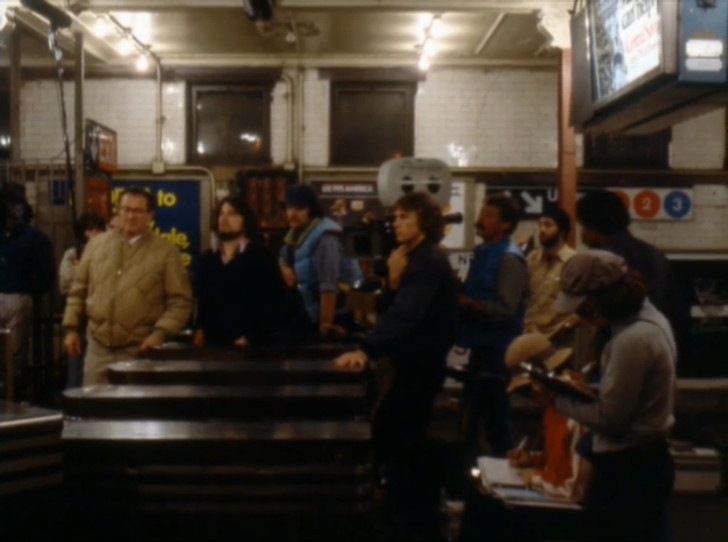
In the scene where Swan and Mercy walk down the subway tunnel together, Andrew Laszlo turned up for filming to find someone had left Laszlo’s camera set up in the middle of the track. Instead of moving it to the position he wanted to film from, Laszlo stopped and admired the way the light from the distant tunnel reflected off the curved rail and decided to shoot the shot from that angle, even though it was difficult to see Swan and Mercy walking up the tracks.
Filming in the subway tunnels was also a very mucky business with the crew encountering giant rats and having to wade through one and a half inches of black steel dust which is created from the wheels of the trains grinding on the rails.
Laszlo’s favourite scene is the kiss sequence which Laszlo suggested be timed to coincide with a passing train to get a “machine-gun like effect of flashes” caused by the reflection of their lights off of the new polished aluminium trains. Walter Hill instructed them to kiss and break away only after the end of the train passes by. David Holden said that shot alone was “worth the price of admission”. Michael Beck and Deborah van Valkenburgh geared up for this scene by talking to each other in character so that Van Valkenburgh could feel like she was alone as Mercy would have felt.
Filming at night meant that the cast had to assemble at 5-6pm every day outside the Gulf & Western Building near Columbus Circle in New York where they took a van to that evening’s filming location. They would film all night until the sun came up and would be brought back to the Gulf & Western building at about 6am.
Michael Beck recalls going to bed after he got dropped back after the shoot and waking up at about 1pm for lunch and then heading down to the gym for 2pm in order to stay in shape. Marcelino Sánchez, who played Rembrandt, was quoted as saying “sometimes I wonder if this is a motion picture or a marathon”, due to the large amounts of running in the movie. You can actually see James Remar hitting Tom McKitterick on the back side during the chase scene to help him keep up the pace.
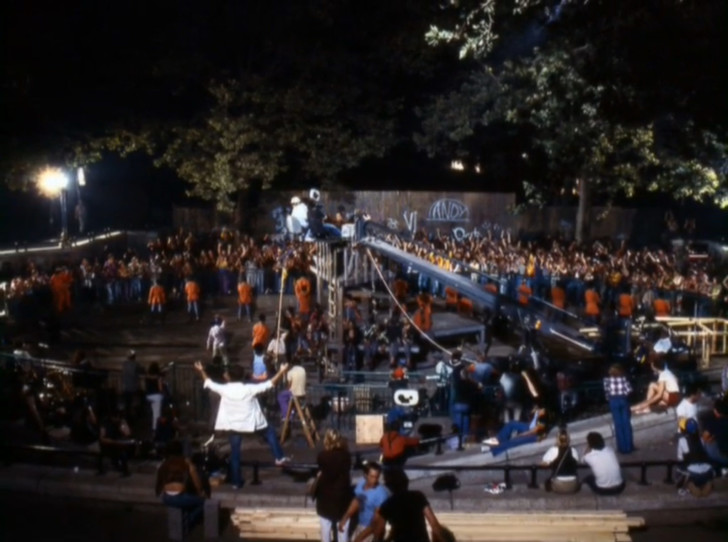
The cast had to undergo intensive warm-up sessions to ensure they would be ok during these “marathons”. These warm-up sessions also helped the actors looked “pumped-up” to make them look even tougher on screen. Remar commented that “I’m certainly no Steve Reeves, but I think I come across as a man of some strength. I enjoyed playing Ajax as I think actions often do speak much better than words”.
The only reported casualty during the filming was Deborah Van Valkenburgh who was injured in two separate incidents. Firstly, in the subway where she is running with Fox’s double she fell and broke her wrist because the actor didn’t let go of her hand. This explains why she later appears in a jacket as it covers up the cast. Also, Michael Beck accidentally swung a bat into Deborah’s face during the scene where he throws it at the cop in the subway. She was rushed to hospital at 3am for stitches and still has a scar to this day.
The gangs of The Warriors are one of the reasons that the movie is so iconic. One of the most iconic gangs are The Baseball Furies. Walter Hill and Frank Marshall are both sports fans so created a lot of sport-themed gangs in the movie. The Baseball Furies combined Hill’s love of baseball and the music group Kiss. They are also based on a real life gang called Second Base who wore Lettermen jackets in the 1970s. There is a reference to this gang when the DJ explains how The Warriors have “made it past Second Base”.
The fighting depicted in the movie was said to be graphic and realistic and was toned down through the addition of music, which was suggested by Lawrence Gordon. All the fight scenes in The Warriors were choreographed and supposed to appear more like a “ballet” or a “dance” and not as violent as the final movie made them appear.
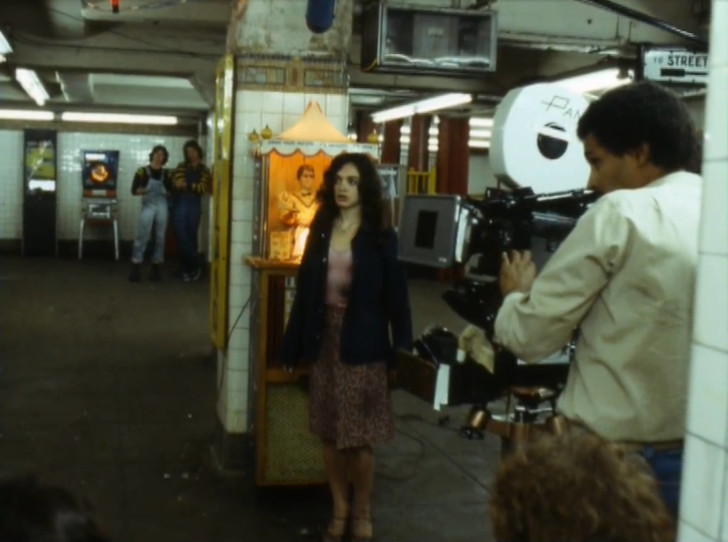
Craig Baxley, the Stunt Coordinator, had to show Walter Hill a punch-by-punch account of each fight to try and create a “street-fight, edgy” quality to them. To achieve this, Hill didn’t want any stunt doubles and so Baxley had to train the members of the cast in how to fight. Baxley also had to find athletes and gymnasts to feature in the movie, largely as the Baseball Furies, due to the lack of available stunt men in New York. The remainder of the actors playing The Baseball Furies were all around the age of 30 and were from Stunts Unlimited.
The Lizzies were one of Walter Hill’s favourite gangs and whilst there were no all-female gangs in New York at the time, this was seen as a nod to the future. Craig Baxley decided to treat this gang like any other and have them fight The Warriors much like any other gang in the movie.
Another prominent female character was Mercedes Ruehl as the undercover cop who captures Ajax. Hill has said that he regrets this scene and would have very much liked to have kept James Remar as Ajax in the movie but couldn’t find a way around it. Hill also recalls that the sequence containing the prom couples only took a couple of hours to shoot and felt that it might have been a bit “too corny, even for [The Warriors]!”.
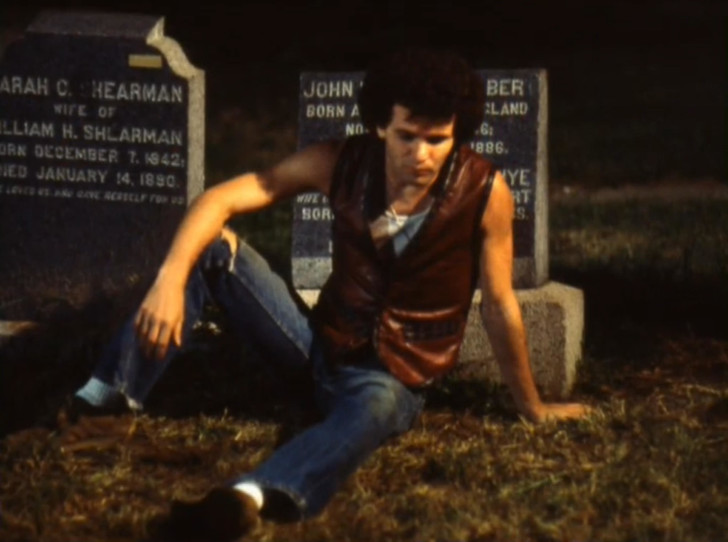
Whilst The Warriors was largely filmed without a set, the scene in the men’s room with The Punks was the only scene shot on a purpose-built set. The set was located at Astoria Studios, Long Island City in Queens. The fight took 5 days to film, eleven hours a day. Walter Hill always liked to have one slow motion sequence in all his fight scenes and in this case the slow motion scene takes place as the last Punk is thrown by Swan through one of the stall doors.
The Warriors was David Patrick Kelly’s first movie and was cast by Walter Hill and Lawrence Gordon after they had seen him in a Broadway play called Working. In that play he gave a monologue as a “hippy that espoused peace and love but was extremely passive aggressive”. Hill and Gordon thought he would make a great villain and so cast him as Luther. They also asked him to keep his long hair for the role which Kelly had for his role in Working despite the fact that he really wanted to cut it short. Hill liked Kelly’s “Richard III” quality which Kelly then used as the inspiration and energy for his performance.
The DJ, Lynne Thigpen, was also picked for The Warriors after starring in Working with Kelly. Kelly recalls watching the rough cut of the movie with Thigpen and remembers her being shocked to see that it was only her lips that were in the movie. Hill picked Thigpen due to her great voice and good looks and the close-ups of her lips only came about on set after Hill kept telling the crew to get the shot even closer.
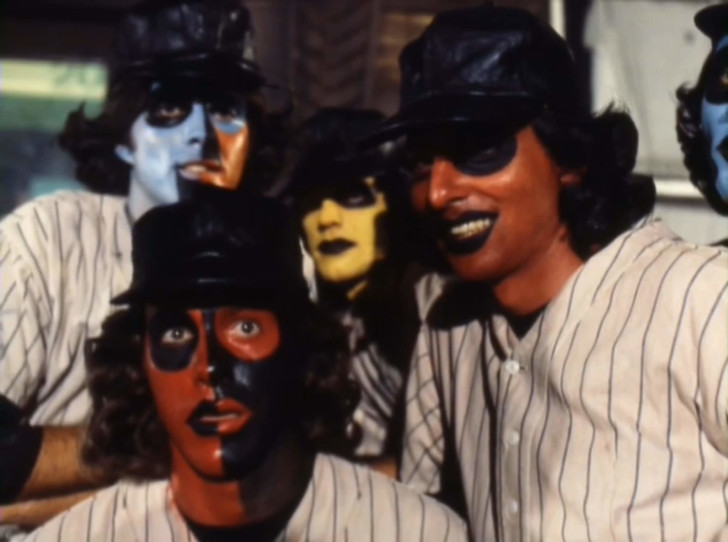
The Cadillac hearse used by The Rogues actually contained no seats and so David Patrick Kelly had to ride shotgun sat on some old apple crates. Kelly improvised the famous line “Warriors, come out to play!” which came about after Walter Hill felt that the scene needed something a little extra so asked Kelly to sing or improvise something, remembering him chanting in Working, so long as it had the word “Warriors” in there. For this improvised piece, Kelly remembered the way his shady neighbour in downtown Manhattan used to chant “Daaaavid… Daaaavid…” and it being the creepiest thing he could remember so based his chant on that.
After being given the direction, Kelly ran under the pier to grab some miniature beer bottles. The crew were unaware of what was happening as they had found a woman’s purse under the boardwalk which had money in it and they were trying to figure out what to do so Kelly’s chanting came as a surprise to them. The sound of the bottles clinking was also extended later on during the editing process. Kelly also decided to not engage with any of the actors playing The Warriors prior to the meeting on the beach as part of the way he geared up for his performance.
In a more amusing story related to the filming, Andrew Laszlo recounts something called the “Loudspeaker Shot”. This was a throwaway shot that Larry Gordon kept on requesting Laszlo to film and was supposed to be a close-up shot of a loudspeaker on a station platform that would be used in conjunction with a platform announcement during the editing of the movie. As the weeks went by, Gordon kept insisting that he wanted this shot even though it could be filmed at any time and there was no rush to get it filmed. As a joke, Laszlo created a long tape reel entitled “Loudspeaker Shot” that was played in the daily rushes one day. The shot was a slow pan of a platform getting closer and closer to the image of a loudspeaker. However, Gordon became frustrated watching the tape as it wasn’t immediately obvious that there was a loudspeaker in the shot. By the time it came in to view everyone in the room was laughing, including Gordon, who didn’t mention it again during the rest of the shoot.
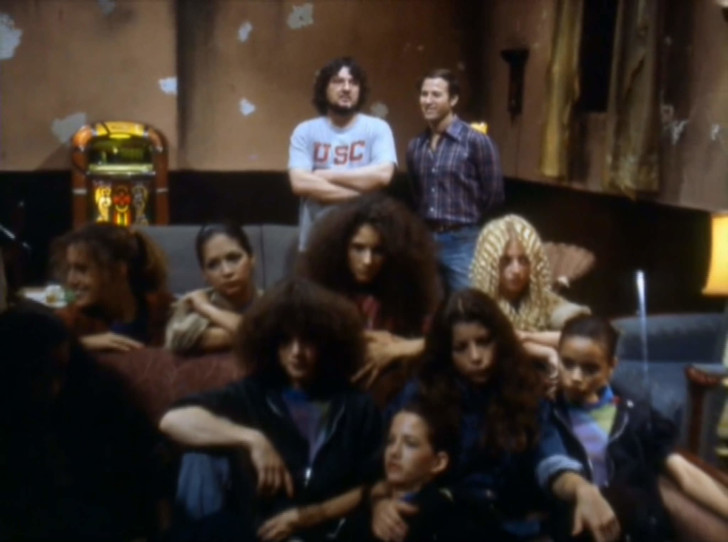
In another story, Andrew Laszlo was on the beach at Coney Island when he witnessed the most incredible sunrise. He sent for a camera but one wasn’t available. He was gutted he had missed it and insisted that 3 cameras be set up in the same place the next morning on the off-chance that it would happen again. He got lucky and it did happen again, except the sky also featured beautifully wispy clouds and a flock of geese that flew across the sunrise. Laszlo didn’t need the shot for the movie but was going to offer it to Paramount for their library. However, when the crew saw the shot they used it to bridge the night time sequence of the movie into the day time sequence at Coney Island.
At the very end of the movie, the cast were told to keep walking down the beach at Coney Island. It took them some time to walk down the beach and the cast were told to stay in character even when they knew they were just specks on the horizon. Eventually, the cast got to the end of the beach and worked their way back to where the crew were set up. During this time, the crew had prepared a bouquet of a dozen red roses which they then presented to Deborah Van Valkenburgh which she remembers fondly to this day.
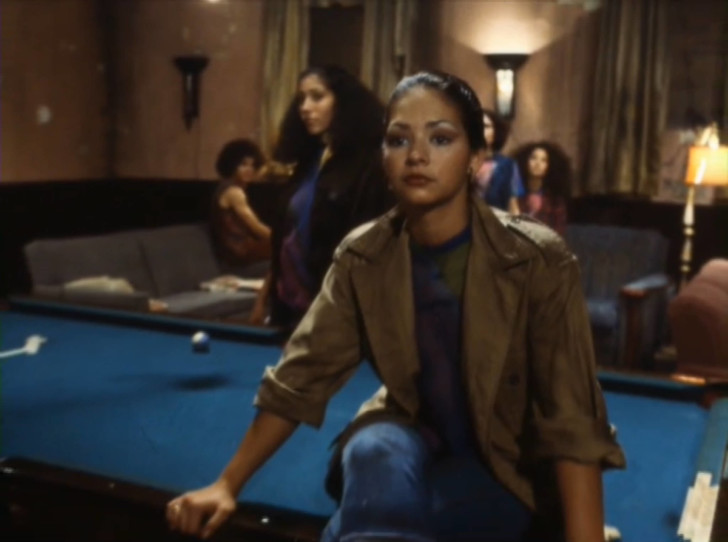
Filming The Warriors took place over 60 gruelling nights with the film crew starting work at 8pm, and “lunching” together at midnight. By the time the filming had ended, The Warriors cast and crew felt as though they had actually shared a kind of gang experience, living and working together on the streets of New York.
The movie captures their excitement, exhilaration and fears and makes audiences feel very much part of The Warriors’ tension-filled night on the run. The cast vowed to get together for a reunion one year later but this was unlikely to have happened due to everyone working on projects in far flung locations, but demonstrated the camaraderie that built up between them.
Michael Beck, who played Swan, was also the real life “leader” of the actors as well with his infectious enthusiasm for every scene no matter how tired everyone was. If Beck was willing to run all-out at 4am, then so were they. “I don’t know if I felt like a leader” says Beck, “but I always do everything 100% and that does set a pace for everyone else”. Deborah Van Valkenburgh really enjoyed working on the movie and found the rest of the cast to be a joy to work with. One night she recalls her trailer was being used by lots of extras so the guys invited her into their trailer where they acted like gentlemen and were never inappropriate.
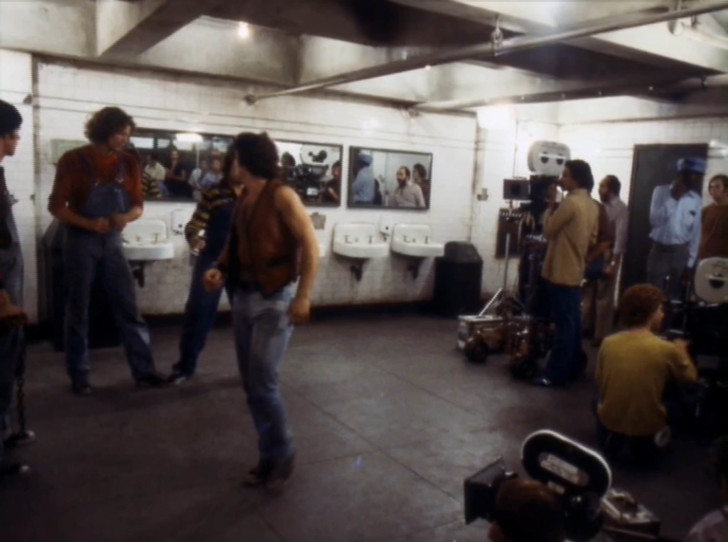
Post-production was a race against time to get the movie finished and released ahead of The Wanderers which was a 60’s gang movie being filmed at the same time and the crew had 3 editing rooms working around the clock to get it finished on time. To compound things, Paramount were not too happy with the rough cuts, nor were the cast who didn’t know how to view the movie as they thought it looked like a surrealistic cartoon and they had all felt that they had taken part in a more ‘realistic’ movie. However this all changed when the movie was finished and released.
The fast pace at which they were rushing to complete the movie added to the frantic energy of the movie. Walter Hill directed the crew to cut the film to keep the energy and pace up to keep it moving and said “the best word I can use to describe the film is bizarre. It operates on baroque sensibility that I think you’ll find is unique”.
It was during the editing process that the decision to cut the original opening of the movie was made – the scene at Coney Island where Cleon chooses his gang of nine to attend the conclave. Editor David Holden thought that the scene was a mistake as it didn’t mesh with the rest of the movie which was largely shot at night. Walter Hill agreed and it was dropped from the movie. During the editing process the “wipes” were added to transition between shots to give a sense that other things were happening at the same time.
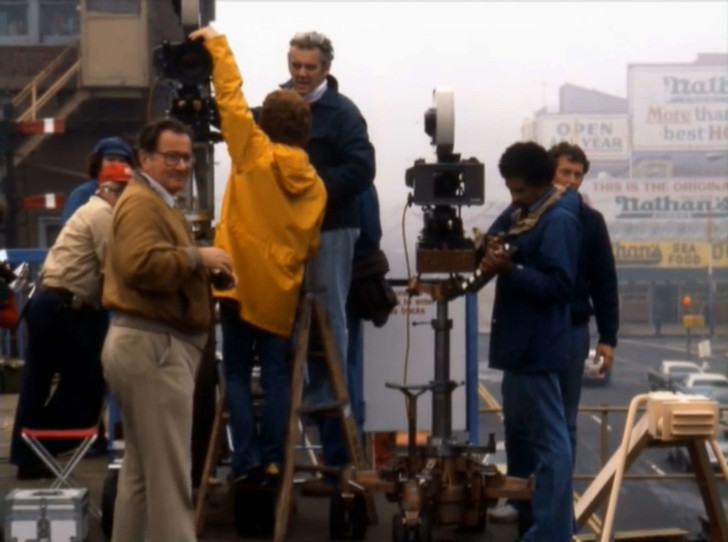
The Warriors was released on the 9th February 1979 and started off as a success with crowds of people queuing around the block to see the film in the theatre. It became the number one film that weekend despite there being 6 other films that opened. President Ronald Reagan was also a fan and called Michael Beck to tell him that he enjoyed watching The Warriors when he watched it at Camp David. He also sent a note to Beck which he still has to this day.
However, The Warriors caused a lot of controversy after it was released as people were scared that it encouraged gang behaviour and that the gangs of New York would come together like they do in the movie. There were supposedly several gang outbreaks reported in large cities across the USA.
After several rival gangs turned up to watch the movie in different cities, several violent incidents occurred causing the producers to change the poster as a way of cutting down on the violence. The original tag-line on the movie poster was the cause of a lot of this outrage stating “These are the armies of the night. They are 100,000 strong. They outnumber the cops five to one. They could run New York City.” The line about the gangs outnumbering the cops five to one was later removed from the movie trailer.
Many people protested outside of movie theatres and tried to get the movie banned. The original poster featured the logo and several tough looking gang members. The second poster just featured the logo against a white background. Walter Hill originally wanted the tagline of the movie to read “Sometime in the future” but Paramount thought it sounded too much like Star Wars. Hill said that he thought Paramount were expecting a film like Saturday Night Fever.
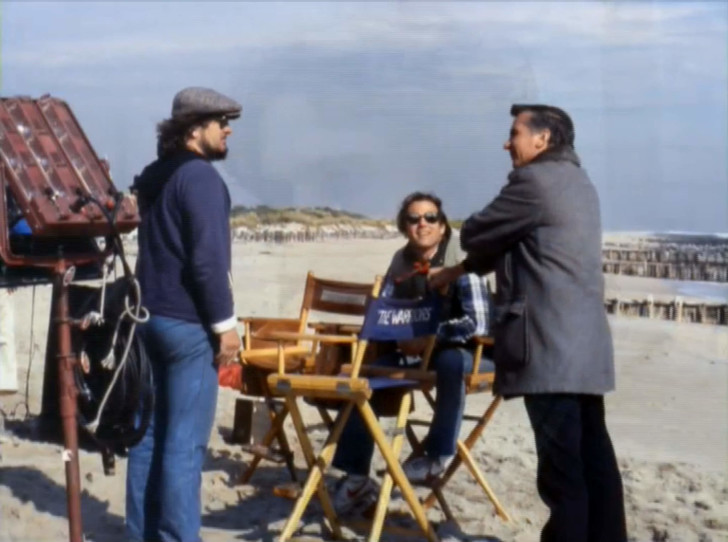
Paramount was also forced to pay security guards to attend screenings to stop the violence. Andrew Laszlo went to see the film at an early screening with his wife and children dressed in vests like The Warriors with around 40 other movie-goers.
On coming back into the lobby, there were queues of people 6 abreast, waiting to go in and watch the movie. Laszlo decided to stay and watch the film a second time to see how the movie experience felt in a packed theatre. Unfortunately this time, some teenagers and young members of the audience started tearing up the seats and trashing the theatre before the movie was over.
Michael Beck and David Harris often sneaked off to Times Square to watch it. Whilst the kids would stand up screaming and shouting at the screen they would be sitting quietly thinking “oh so this is how the real people see it”.
A lot of the trouble was caused by rival gangs attending the same screenings but most of the trouble actually happened outside the theatre. Despite their efforts, Paramount was not able to stem the violence that was breaking out across the country as a result of the movie’s release and 3 people were allegedly killed as a result of the violence. A kid was killed outside a theatre in Oxnard, California, a week after the film opened; a second was killed in a drive-in theatre in Palm Springs and the third was a Boston high school student who was supposedly killed by two men in a subway station after they had seen the film.
Paramount had no choice but to drop the advertising of the film and then later pull it from cinemas preventing it from being the major commercial blockbuster that it was shaping up to be. The film by this point had grossed a sizeable $22.5m. Andrew Laszlo and other members of the crew commented that they would not have made the film if they had known about the violence it incited.
However, since then the movie has gone on to become a cult classic which is still enjoyed by new generations of people all around the world more than 35 years later and the success of this website is testament to the legions of fans who cite The Warriors as being their favourite, or one of their most favourite, movies of all time.
Facts sourced on this page have come from Paramount Pictures (Handbook of Production Information and Director’s Cut DVD/Blu-Ray), magazine articles, IMDB, interviews and e-mailed contributions. For over 300 more production photos, click here.
